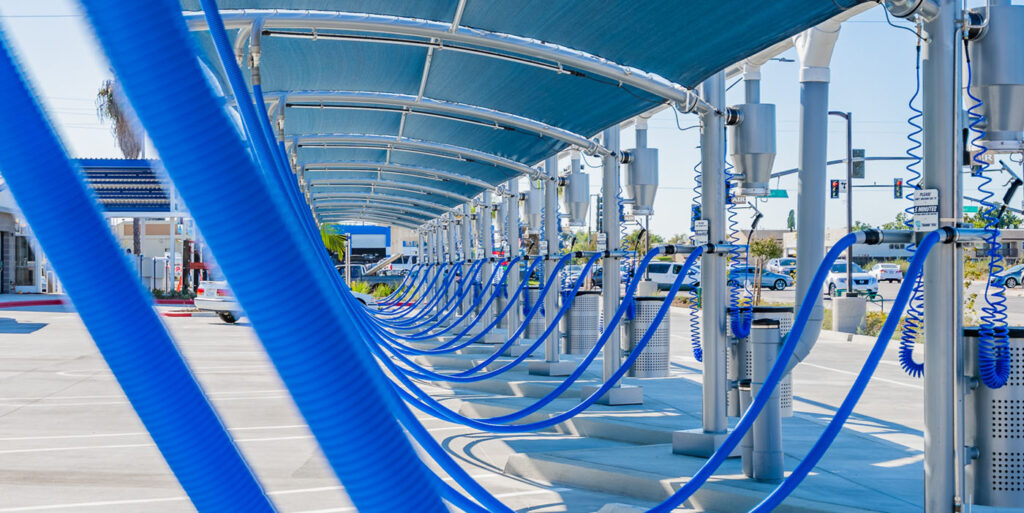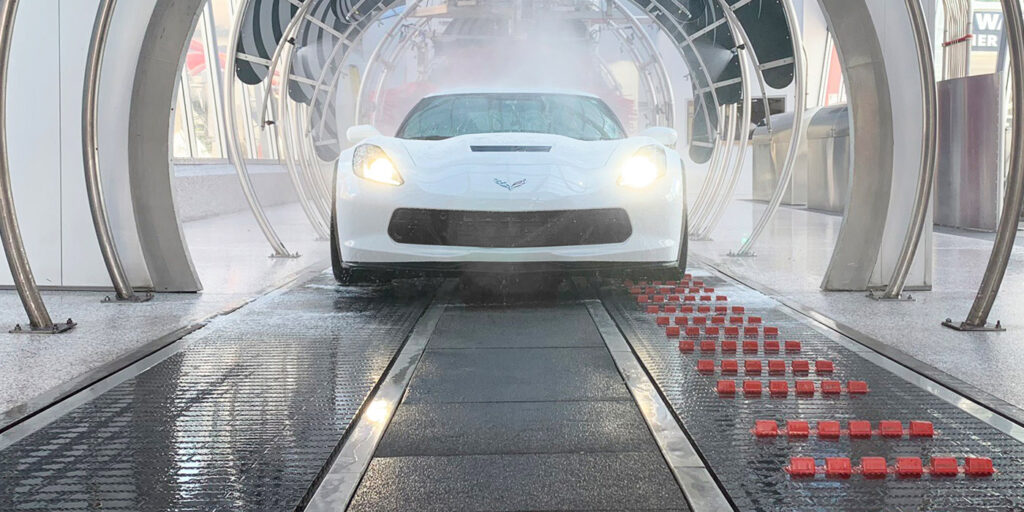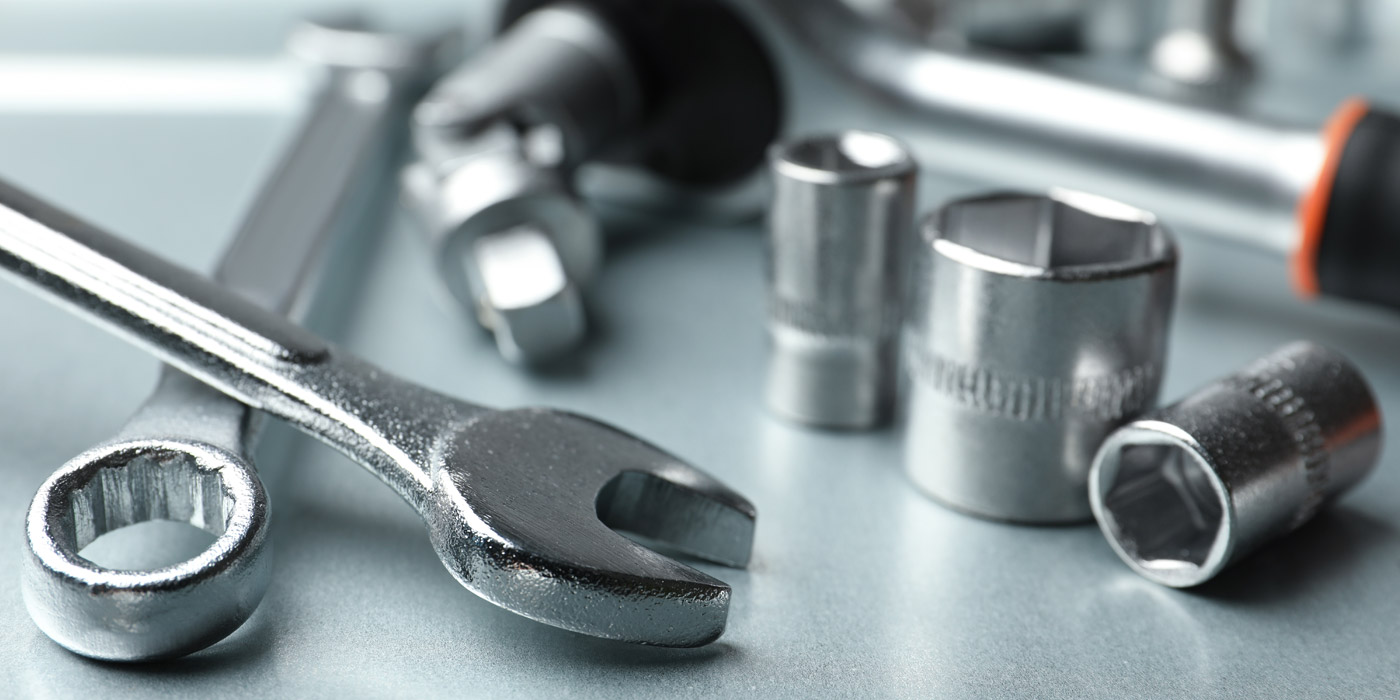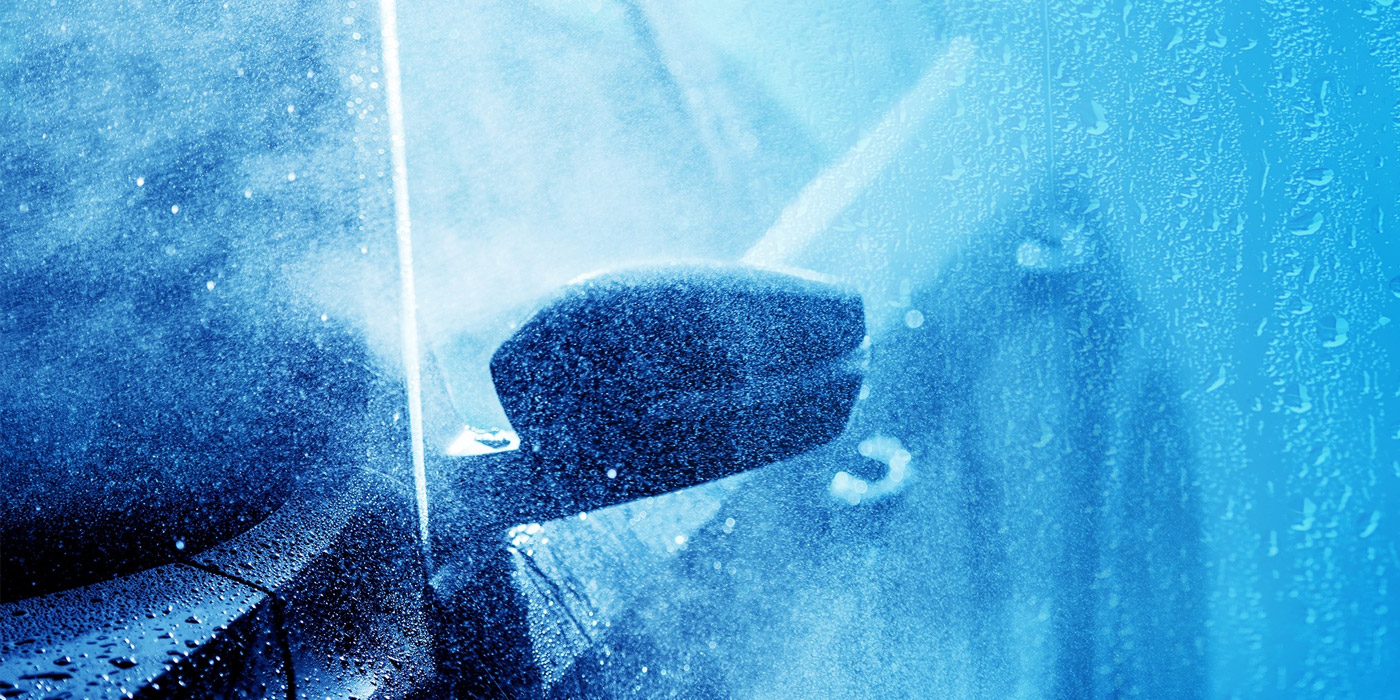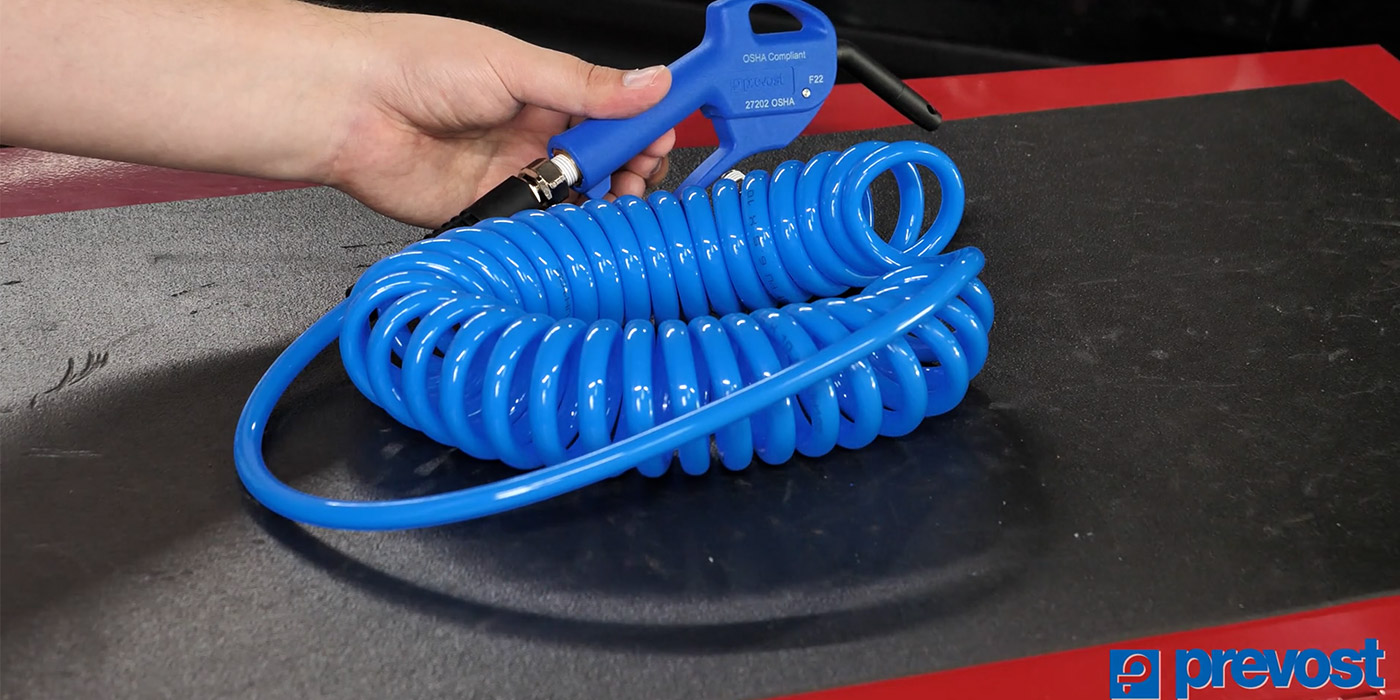It’s seen on many new builds and renovations across the U.S. — usually in tall letters on the wash’s main building: the words “free vacuums.” While used as a marketing strategy to draw more new customers in with a strong value statement, the offering of free vacuums appeals greatly to the motoring public — because, after all, the price is right, and who doesn’t need to vacuum their vehicles on a regular basis? However, careful what you market, because customers do not want to get what they pay for: a cheap experience.
Fortunately, today’s carwash vacuum systems are more powerful, easier to maintain and — thanks to vacuum booms — more pleasant to operate. In this article, we contacted some of the leading providers of this equipment to discuss what makes for a great vacuum boom.
On the stay
Express exterior carwashes offer a convenient and quick way to clean a customer’s vehicle. However, not all customers want a complete automated experience when visiting a carwash. In fact, many customers are considered do-it-yourselfers and take pride and satisfaction in participating in the vehicle cleaning process.
It’s a phenomenon Camden Easterling, marketing director for Vacutech LLC, says researchers refer to as the “Ikea effect.” “Vacuums complete the customer experience. Clean, dry and shiny exteriors create demand for equally tidy interiors,” she says.
And, Easterling continues, researchers report that consumers experience a significant amount of pride and ownership in tasks they complete — even seemingly tedious jobs, such as assembling furniture from retailer Ikea. “We often hear from vacuum users that they feel extra satisfaction with vacuuming, because they vacuumed their interiors,” she adds.
While vacuuming their own vehicles may give your customers peace of mind and assurance that the job is being performed to their expectations, poorly functioning equipment that is not user-friendly will lead to a bad experience, regardless of the price. Modern vacuum booms are where form and functionality meet.
In fact, when asked what makes for a great boom, Danny Stewart, sales manager of AutoVac, sums it up in one word: functionality.
Related: Ensuring efficient vacuum systems
“The boom/arch needs to allow the customer to easily and quickly vacuum his or her vehicle while at the same time enabling the wash staff to readily service it, so it performs at optimal performance at all times,” Stewart says.
Failing to achieve those two critical points of operation and maintenance will lead to frustrated customers as well as employees. However, as Stewart confirms, appearances matter at the carwash, so after functionality marks are hit, make sure to uphold form as well.
“Design and appearance are the next most important aspects of a quality vacuum arch/boom. It needs to fit your brand and be pleasing to your customers. Vacuum arches should welcome customers to your carwash, as it is often the first equipment the customer will notice as they drive up,” explains Stewart, adding that there are big differences in both design and functionality in the market, so operators should choose wisely.
A great fit
The appeal of free vacuums upheld by booms allows customers to use the equipment at their own paces and not worry about beating a timer. As customers will be using the vacuums for longer periods, compared to traditional timed vacuum stations, making sure they are comfortable to use is key.
“Ensuring the vacuum has ergonomic features is important for the customers,” insists Jaimie Sokolski, general sales manager for Mosmatic Corp. “Quality materials and construction make a great boom, but ease of application and comfort while operating the equipment is what the customer cares about most.”
Sokolski’s company offers an operational boom that can be wall-, ceiling- or post-mounted and pivots around vehicles as the customer is vacuuming. Overhead booms, either manufactured in this fashion or fixed with single or dual drops, offer a solution to a common and persistent vacuuming issue of traditional equipment.
Using a traditional carwash vacuum, users typically drag and pull hoses in and around the vehicle and its tires as well as on concrete, leading to damage of the equipment and vehicles as well as elevating the potential for injuries, such as tripping over hoses.
Related: Self-serve technologies update
With hoses off the ground, users have one less thing to concern themselves with while they are stretching and bending to clean those hard-to-reach interior areas. As the operator, you can further enhance ease of use through site design. Operators should make sure that stations are available and spacious enough to help promote flow and customer convenience.
“The gold standard that we recommend is 12-foot-wide spaces,” Stewart notes. “This will allow your customers to vacuum easily without fear of bumping into neighboring cars. At a minimum, we say 11 feet is the smallest you should go. At a maximum, we like to be under 15 feet, especially if you’re doing fabric canopies, which can sag or appear loose over time the wider they are.”
Although there is no available research on the matter, a leading cause of a customer leaving a wash site without service is likely because of long wait times. Simply put, customers will not wait long in line for either a carwash tunnel, bay or vacuum stall to open up for their quick and convenient use. Most likely, these customers will visit your competitor down the block or come back another day. If your carwash site is busy, that’s good for you, but it’s not always good for the on-the-go customer.
As a result, during site design or remodeling, consider this: How many vacuum stalls are too many? In Easterling’s experience, more is better.
“Wash operators virtually never say they put in too many vacuum stalls. Just the opposite,” she proclaims. “Owners typically say they underestimated the demand for and popularity of the vacuums.”
The ultimate number of vacuum spaces and booms that are ideal for your site will be determined by several factors, such as lot size and shape, tunnel length, traffic counts, etc. Planners must evaluate each site, as no two are exactly the same. Reputable manufacturers and suppliers can help you determine the optimal layout, spacing and orientation that feature the maximum amount of vac stalls possible for your site.
“While the industry has some rules of thumb for how many vacuum stalls a site needs, that number really is best determined in conjunction with your vacuum engineering team and will consider factors such as your customer volume, demographics, weather and more,” confirms Easterling.
Time to accessorize
Vac booms offer a leading and obvious opportunity for an operator to brand the business. Customers who are on-site as well as future customers on the road notice the sleek, attractive and modern appearance of carwash vacuum booms. In many ways, in addition to a clean and new building façade, LED signage and attractive landscaping around the site, vacuum booms signal that the business is updated and fresh with leading equipment.
Especially when visiting a carwash, customers demand a clean and safe experience. Modern vacuum booms from reputable companies hit both marks. And, while the boom can draw customers onto the lot, operators should maximize the interest and customers’ time on-site to enhance the experience. This can be accomplished with boom accessories.
For the equipment itself, Sokolski recommends a detachable elbow. “That is going to be your tightest area of turn,” he explains. “Pencils, combs, etc., will get stuck in this area — it is a debris trap.” Having equipment features, such as a detachable elbow, will help maintenance employees clear hoses faster and restore the vacuum’s suction and performance.
According to Sokolski, a live swivel on the wand from the hose to the head handle will also increase ease of operation for the user while vacuuming. When it comes to adding branding elements, he mentions that operators can take advantage of placing the company’s colors right into the customers’ hands.
“You can easily brand the color of your carwash on the hoses,” notes Sokolski.
Several manufacturers also offer booms, posts and lighting in various colors to match any carwash’s specific theme or color combinations. Signage depicting the carwash’s name or important instructions and caution messages can also be included in and around vacuum stalls.
“For me,” inserts Stewart, “there are only two must-have accessories: LEDs and a mini separator. LED lights not only make your customers feel safe in the evening hours, but they also illuminate the parking lot for all to see as they drive by. A mini separator attaches to the back of each arch. The operator should view it as an insurance policy for their main piping, allowing it to minimize the odds it will get clogged.”
Operators can elevate customer experiences with additional accessories as well. A shelf, cart or bottle holder for spray bottles, for example, is a nice touch.
Easterling cites other popular accessories, including:
- Waste receptacles: Include these receptacles at each vacuum stall and place them practically throughout the wash site. Customers love the ease and speed of simply emptying waste from their vehicles where they are parked rather than trekking across the lot to dispose of coffee cups, for instance. In addition, it also means less work for employees. For vacuum systems that have convenient clean outs (called debris separators or dump valves) on each boom, waste receptacles mounted on the arches make daily emptying fast and simple.
- Mat racks: Mat holders are another ergonomic customer favorite for comfortable and tidy vacuuming. Customers can clip their mats to the racks rather than bend over or kneel to vacuum. Racks keep mats cleaner, since customers won’t need to place them on the ground or on their vehicles while vacuuming.
- Canopies: Customers appreciate awnings that provide shade and protection from the elements. Awnings come in materials ranging from fabric to perforated aluminum, allowing you to tailor them to your site’s needs.
- Air: Adding compressed air to your booms so customers can clean the nooks and crannies or blow off those last few drops of water from hard-to-dry areas, such as mirrors and door sills, is also a recommended accessory.
- Towel bins: If you offer towels on-site, provide towel bins that look good and function seamlessly. Look for towel bins that can be arch-mounted or free-standing close to each stall and that both store clean towels and collect used ones.
“Look for accessories that make your customer’s experience convenient, clean and quick,” sums up Easterling.
What differentiates a good vacuum boom from a great one is more than just what the customer sees from the street. Vacuum booms were designed to ease the use of operation, maintain safety as well as be durable and relatively easy to clean and maintain. Leading booms on the market today feature quality construction, expert engineering, beautiful aesthetics and accessories that promote speed and convenience.
“But,” Easterling concludes, “the top factor that separates a good boom from a great boom is the heart of the vacuum system: the power equipment. A boom can look good and have great accessories, but if it isn’t powered by the right equipment, customers will be frustrated by the lack of suction and head to the competitor that has better performing vacuums.”

